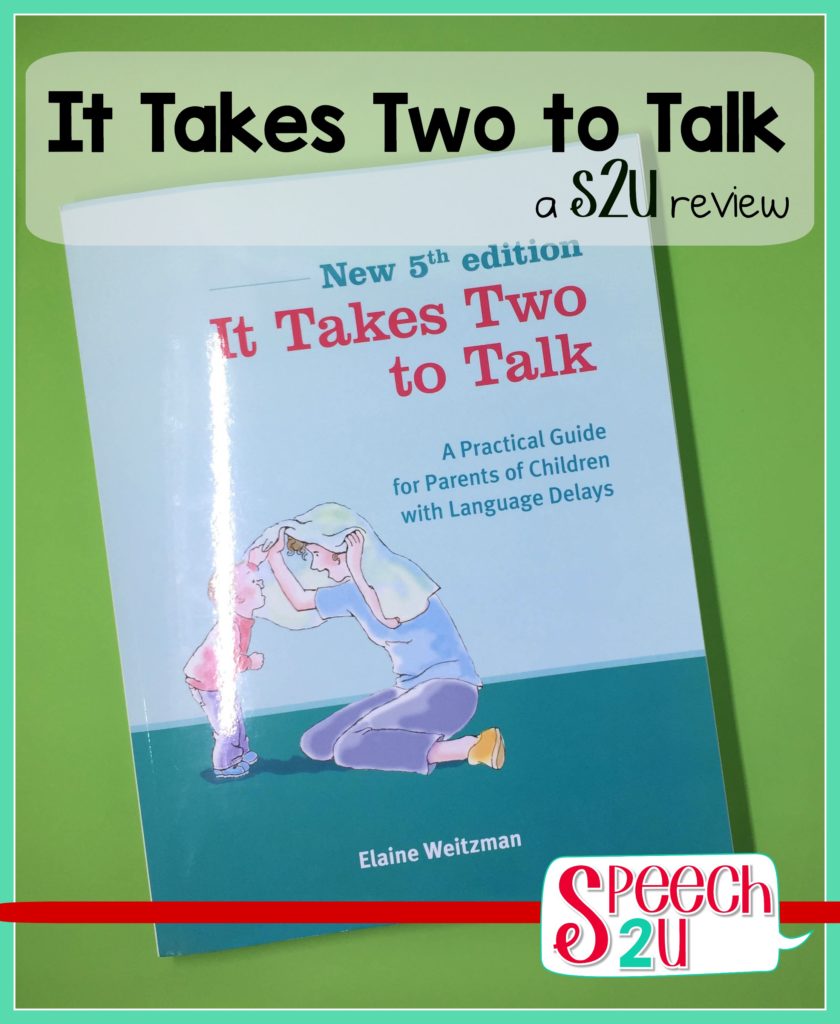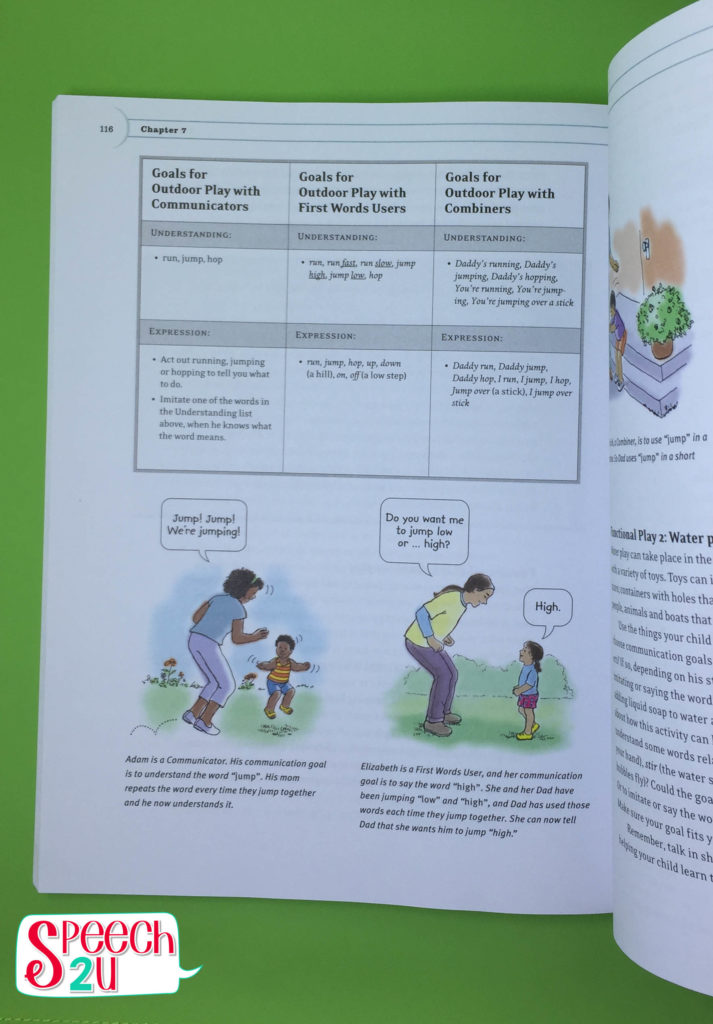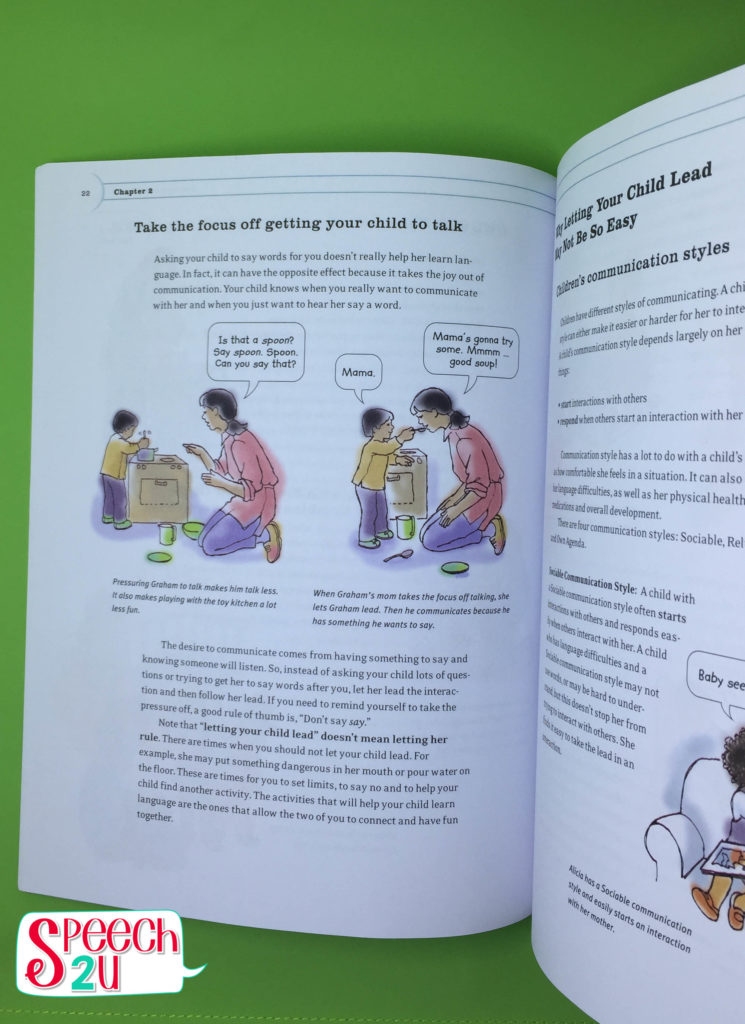When you work with young children, helping parents understand how to communicate at home is as important as the intervention you provide. That’s birth to three 101 right there. Today, I am reviewing an updated edition of the Hanen Centre’s book, “It Takes Two to Talk.”
(disclosure statement: I received a copy of this book for free for the purpose of this review. I have also taken the Hanen It Takes Two to Talk program and certified in teaching this program. I am a Hanen certified member and have been for several years. I heart Hanen).

I first learned about the Hanen program when I was in grad school. The Hanen Centre is located in Canada. They focus on helping parents and other caregivers learn how to support children’s language, literacy and social skills throughout every day activities. I was lucky enough to attend an It Takes Two seminar and have maintained my certification with Hanen since then.
I haven’t been in a situation where I have been able to provide the whole program-BUT I have been able to use many of the Hanen goals and teaching ideas in my individual sessions. Here’s the thing-if you don’t think you can run a parent group right now-you can still get the book-or recommend this book to families with whom you work. The book is written in parent friendly language with many pictures, goal ideas and examples. The It Takes Two to Talk program is evidence based-check out their research summary!
If you can take a haven program workshop-I highly recommend it. They have parent coaching and adult learning down like no one else I’ve seen. Struggling with parents who never DO what you tell them too? Hanen will help you change your approach to get results.
Okay-so let’s get into the nitty gritty of what’s included in this book. There is seriously: SO. MUCH. CONTENT.
It Takes Two to Talk: Identifying Communication Stages
Each Hanen book that I’ve read begins with a checklist of communication stages. I review the checklist with families in session so that we both understand where their child is functioning AND I can tailor my therapy and home program suggestions based on the child’s developmental level. When I meet the child and give them the just right challenge I see so much more progress!
Here is how Hanen breaks down the communication stages:
- Discoverer
- Communicator
- First Words User
- Combiner
These terms are so positive. Compare that with how you might see these children described in an evaluation
- Discoverer: No significant language, below the first percentile, does not interact with others, stimms throughout session, avoids interactions
- Communicator: nonverbal, points on occasion, will direct some language towards others
- First Words User: produces only single words, unable to produce longer utterances.
- Combiner: uses short phrases, unable to use full sentences.
When communicating with parents, you could say something like,
“Johnny is a discoverer. He is learning how to stay in interactions for longer periods of time and imitate other’s actions.” As a parent, I want nothing more than to hear what my child is doing well. I want people to see their strengths-and this language helps us get there.
hear what my child is doing well. I want people to see their strengths-and this language helps us get there.
Hanen’s Four Stages of Early Communication
It Takes Two to Talk includes charts with communication goals for each stage. One thing that is super helpful is a list of bulleted points which indicates when a child is starting to move to the next stage of communication. For example, a discoverer is starting to move towards a communicator role when they begin to look at an object and then back at their parent.
It Takes Two to Talk: Acronyms make it easy to remember information.
Hanen uses acronyms to teach their main concepts. This makes it easy to remember the steps as well as for parents to remember what they need to do when they are working with their child. For example, OWL stands for observe, watch and listen. You can use that to teach families how to start an interaction by following the child’s lead. If you are OWLing and SPARKing you don’t need to go to the doctor-you’ve got a case of Hanen-itis.
Each section includes information on how you would use each strategy based on the child’s communication style and how the adult can adjust their communication style to meet the child’s needs.
Hanen makes it easy to carry out activities at home by providing a variety of examples and pictures throughout the book. They even include three chapters which focus on play, reading books and using music to engage your child. Multiple examples are provided, and activities are broken down based on the child’s communication stage. I copy and provide activity examples for families to use at home.
It Takes Two to Talk: What’s new?
There were a few significant changes that I noticed in this edition- based on new research in our field.
The chapter on Adding Language has been revised to eliminate the use and examples of telegraphic speech. Now, each example shows the parent communicating in short, simple, grammatically correct sentences.
The second major change that I saw was in the section for children who are exposed to more than one language. This section includes information on simultaneous and sequential bilingualism and recommendations for communication at home based on current research.
Helping Children Learn English as Their Second Language
The sections for choosing communication goals includes more information on the importance of turn taking as well as gestural communication.
It Takes Two to Talk Parent Guidebook is available on Hanen’s website.
Question: Have you used any of Hanen’s resources? I’d love to hear what your favorites are in the comments!

